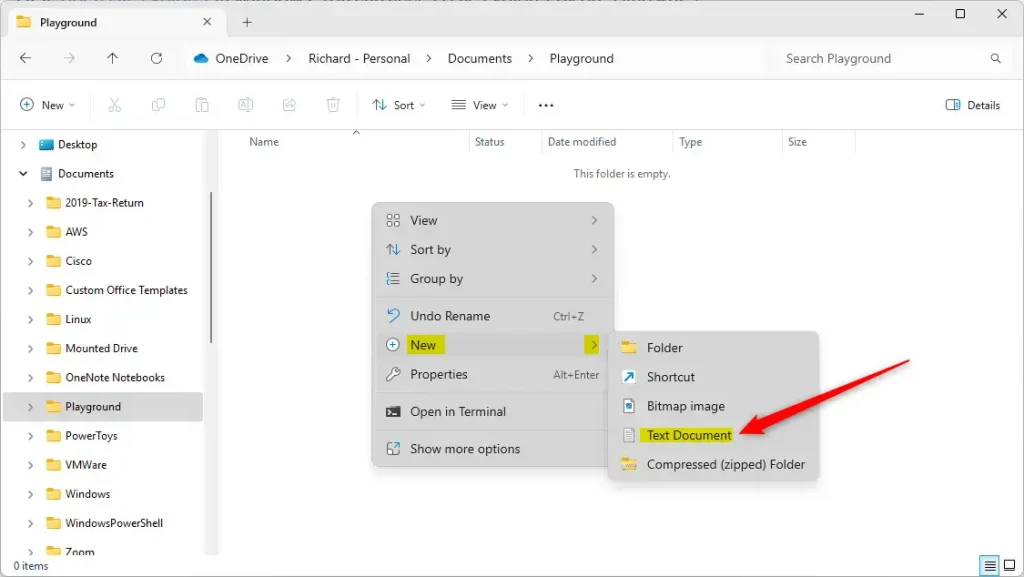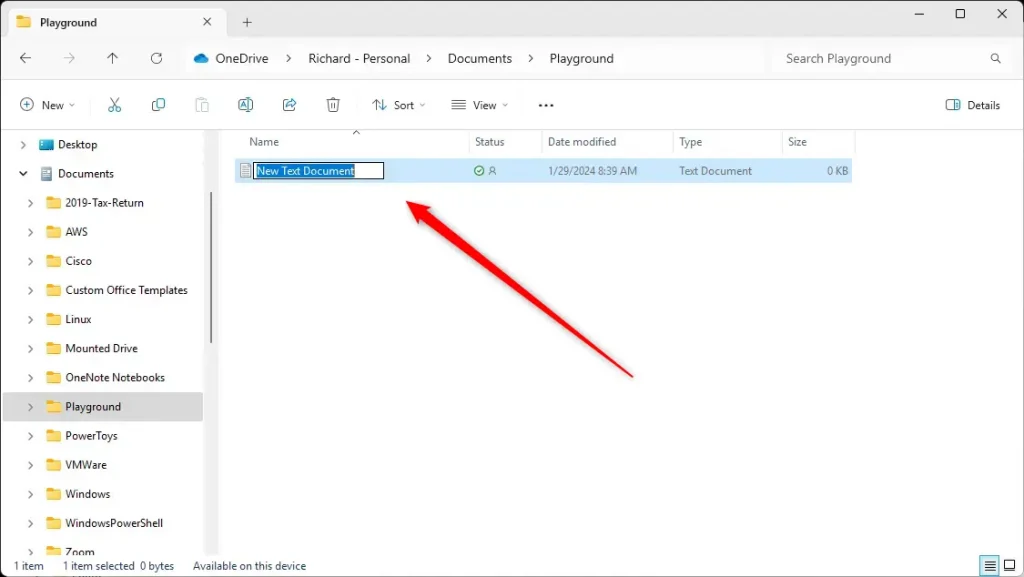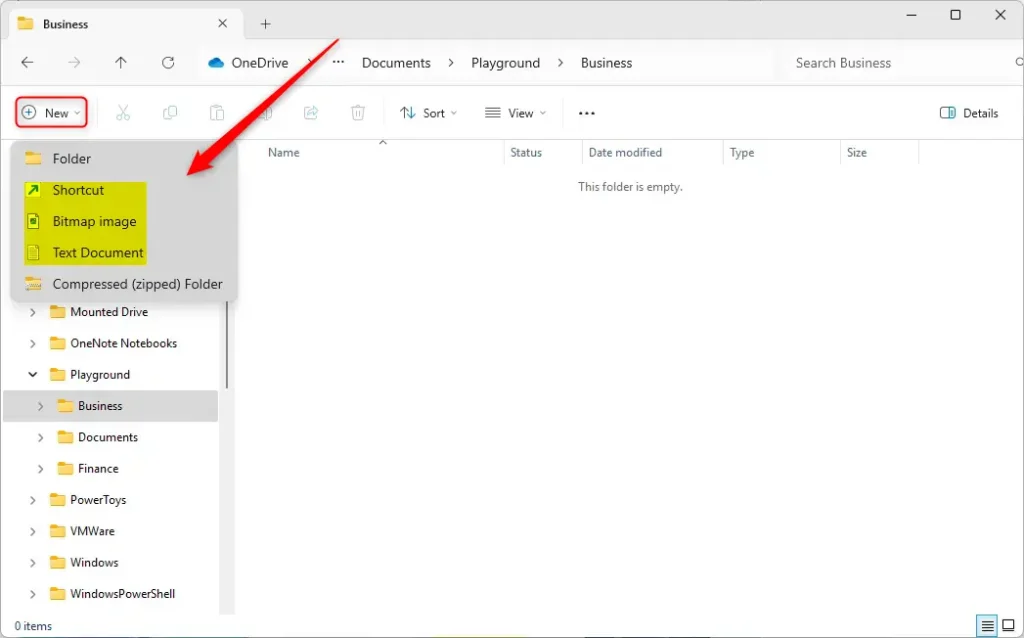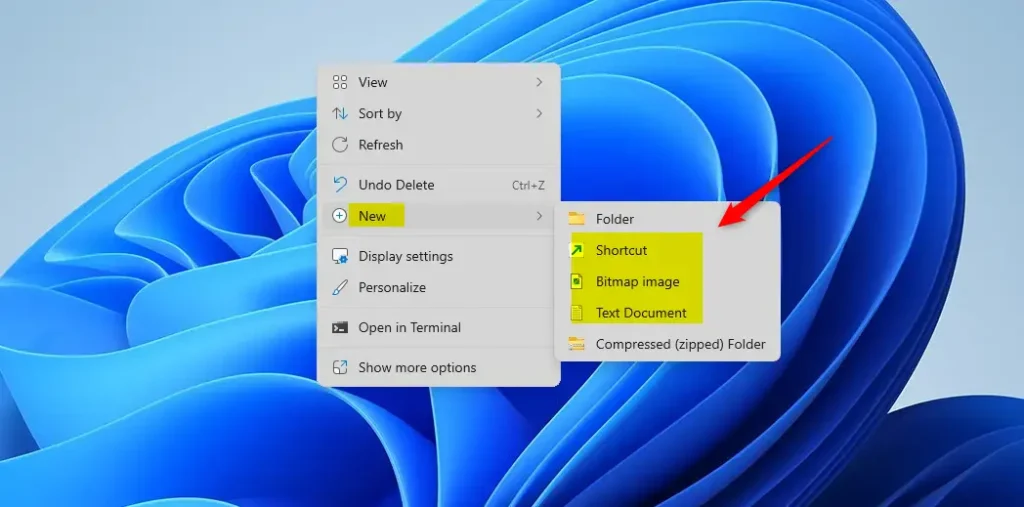This article explains how to create a new file in Windows 11.
Learning how to create new files in Windows 11 is a fundamental skill that can be useful in many situations. Whether you are a student, a professional, or just a computer user, you may need to create new files for various purposes, such as writing documents, coding, organizing data, and more.
Knowing how to create new files differently can save time and make your work more efficient.
Additionally, it can help you become more familiar with the Windows 11 operating system and its features.
In Windows 11, you can create files through various methods, and this tutorial will guide you through each step.
Using File Explorer
In most cases, you’ll use the File Explorer to create new files in Windows. To do that, use the steps below.
First, open File Explorer in Windows. You can access File Explorer by pressing Win + E your keyboard or clicking the File Explorer icon on the taskbar (it looks like a folder).

Then, navigate to the desired location you want to create the file. Use the left sidebar to navigate the folder to create your new file.
Right-click on a space within your desired directory. Hover over “New” in the context menu to expand the submenu.
Select the file type you wish to create, such as “Text Document” for a .txt file.

Type the file name you want in the highlighted field and press Enter.

Using the File Explorer command bar
You can create a new file using the File Explorer command bar by clicking the New button.
Again, navigate to the folder where you want to create the file. Then, click the New button on the command bar and select the type of file you want to create.

The the name of the file you want in the highlighted field and press Enter.

Using Context Menu
First, right-click on the Desktop (Win+D) or in File Explorer (Win+E).
Then, select New and choose the type of file you want to create.

Using Windows Terminal (Command Prompt)
You can also create new files using the Windows Terminal (command line). To do that, use the steps below.
First, press Win + S and type “Windows Terminal” or simply “cmd.“
Then, click on the “Windows Terminal” app to open the app.
Navigate to the desired directory you want to create the file in. Use the cd command to change directories. For example:
cd Documents
Run the command below to create a new file.
copy NUL "YourFileName.txt"
Replace “YourFileName” with the desired name for your file.
Using Windows Terminal (PowerShell)
Users can also use the Windows Terminal app with the PowerShell tab to create new files in Windows.
To do that, use the steps below.
First, open the Windows Terminal app with PowerShell.
Right-click the Start button to open the Power User menu, or press Win + X and select “Windows Terminal” from the menu.
Then, navigate to the desired directory you want to create the file. Use cd to navigate to the folder, same as in Command Prompt.
Run the command below to create a new file.
New-Item -Name "YourFileName.txt" -ItemType "file"
The file will now be created in the specified location.
Using a Shortcut Key
To use your keyboard shortcuts to create files, use the steps below.
First, open the folder in File Explorer where you want to create your file.
Then, press Alt + F, then W, and finally T (one after the other) to create a new text document.

Remember, you can always rename the file and change its extension if you need to create a different file type.
These methods cover the most common ways to create a new file in Windows 11, allowing you to start your work efficiently.
That should do it!
Conclusion:
- Learn how to create new files in Windows 11 efficiently
- Master various methods of creating files, such as using File Explorer, File Explorer command bar, context menu, Windows Terminal (Command Prompt), Windows Terminal (PowerShell), and keyboard shortcuts
- Enhance your productivity and familiarity with the Windows 11 operating system
- Explore the diverse options provided by Windows 11 to suit your specific file creation needs
- Feel free to provide feedback or additional insights through the comments below

Leave a Reply Cancel reply